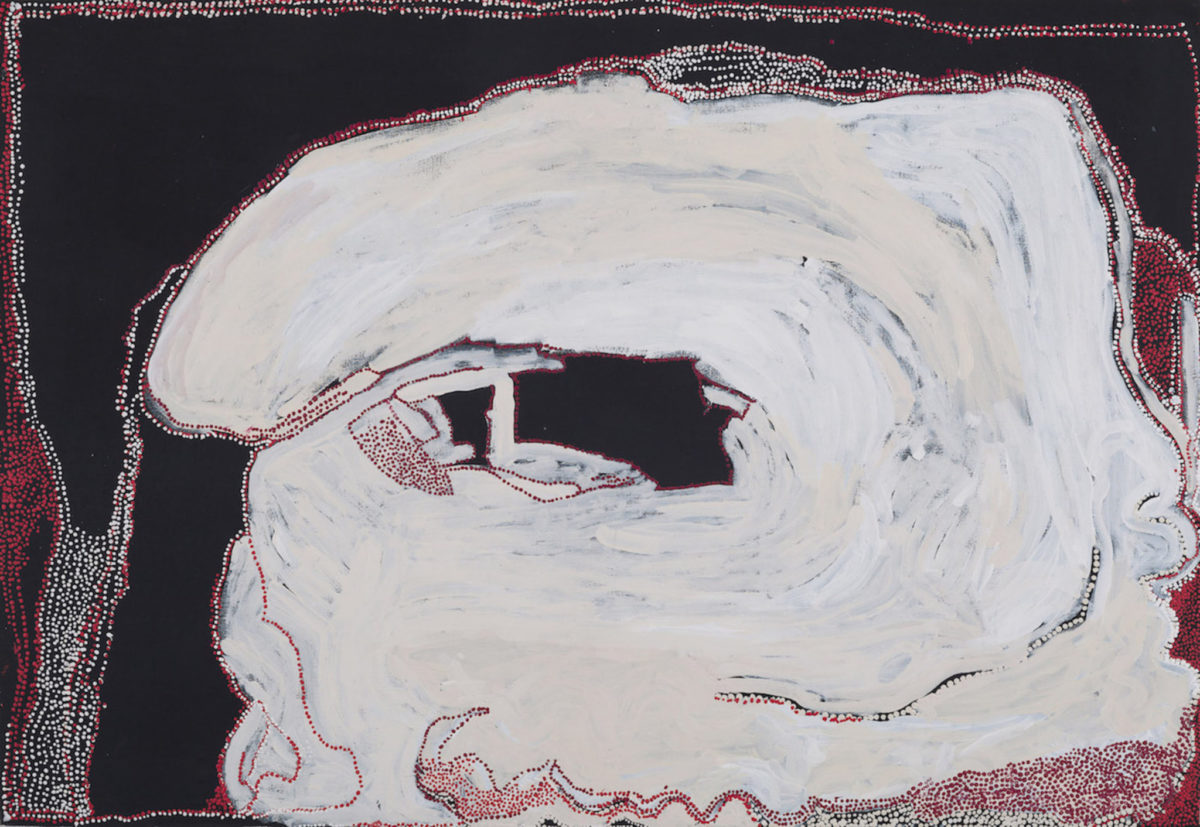Aboriginal women artists redefining Australia’s contemporary art movement draw from Indigenous knowledge to reveal our shared humanity
“The compelling beauty of the artworks in Marking the Infinite holds open the possibility of unfettered appreciation, while their cultural distance precludes rational critique. You sense you are experiencing a shared humanity, a different world view, one where the land, the sea, and the sky are a continuum,” explains Carol E. Mayer, MOA’s Curator of the Pacific and the exhibition’s organizer. “This stunning exhibition offers a glimpse into the diverse contemporary art practices of women who have dedicated their lives to the quiet, dignified work of holding this world together. Their art focuses on the intimate and the infinite, the tiniest fruits of the earth and the stars above, a single stitch and the great web of creation, a brush across canvas and the unfolding infinity of being.”Marking the Infinite features the work of nine Aboriginal women—Nonggirrnga Marawili, Wintjiya Napaltjarri, Yukultji Napangati, Angelina Pwerle, Carlene West, Regina Pilawuk Wilson, Lena Yarinkura, Gulumbu Yunupingu, and Nyapanyapa Yunupingu— who are all contemporary artists represented internationally in private and public collections. Challenging the boundaries of the contemporary Aboriginal art scene in Australia since the late 1980s, these artists bring their ancient cultural knowledge into their contemporary practice. By continuing to create art, they are consciously revitalizing traditions, ensuring the continuity of their languages, bringing pride and autonomy to communities, and revealing the continued relevance of Indigenous knowledge in the 21st century.
For this exhibition, the 61 works, primarily paintings, will be installed in the Audain Gallery. The space will be transformed into an ephemeral microcosm of our natural world, providing a glimpse into another cosmic and infinite universe. Marking the Infinite is a unique opportunity for visitors to cross cultural and geographical boundaries and view the environment through a resonant Indigenous lens, commanding them to seek different ways of seeing and valuing their shared existence.Originally curated by scholar and Australian native Henry Skerritt, Marking the Infinite is drawn from the collection of Miami-based art collectors Debra and Dennis Scholl. Following a lauded run at five galleries and museums across the United States of America, the exhibition makes its Canadian debut at MOA. A comprehensive, hardbound catalogue will accompany the exhibition comprised of essays by leading experts in the field edited by Skerritt, as well as a 28-page brochure edited by MOA’s Carol E. Mayer.
About MOA (moa.ubc.ca)
The Museum of Anthropology (MOA) at the University of British Columbia (UBC) is world-renowned for its collections, research, teaching, public programs and community connections. Founded in 1949 in the basement of the Main Library at UBC, its mission is to inspire understanding of and respect for world arts and cultures. Today, Canada’s largest teaching museum is located in a spectacular Arthur Erickson-designed building overlooking mountains and sea. MOA’s worldwide collections consist of more than 42,000 cultural objects and artworks created in Asia, Africa, Oceania, Europe and the Americas—with a focus on the Pacific Northwest. MOA’s Multiversity Galleries provide public access to more than 9,000 of these objects and artworks. The Audain Gallery and the O’Brian Gallery, MOA’s temporary exhibition spaces, showcase travelling exhibitions, as well as those developed in-house.
| LISTING INFORMATION | MOA presents Marking the Infinite: Contemporary Women Artists from Aboriginal Australia |
| Dates: | November 1, 2018 to March 31, 2019 |
| Opening: | November 1, 2018 at 7pm |
| Address: | Museum of Anthropology University of British Columbia 6393 NW Marine Drive, Vancouver, BC |
| Website: | moa.ubc.ca |
Feature image: Gulumbu Yunupingu, Ganyu (Stars), 2003. Earth pigments on bark, 70 7/8 x 31 1/2 in. Collection of Debra and Dennis Scholl © The estate of Gulumbu Yunupingu, courtesy Buku‐Larrnggay Mulka Art Centre, Yirrkala. Photo by Sid Hoeltzell.

